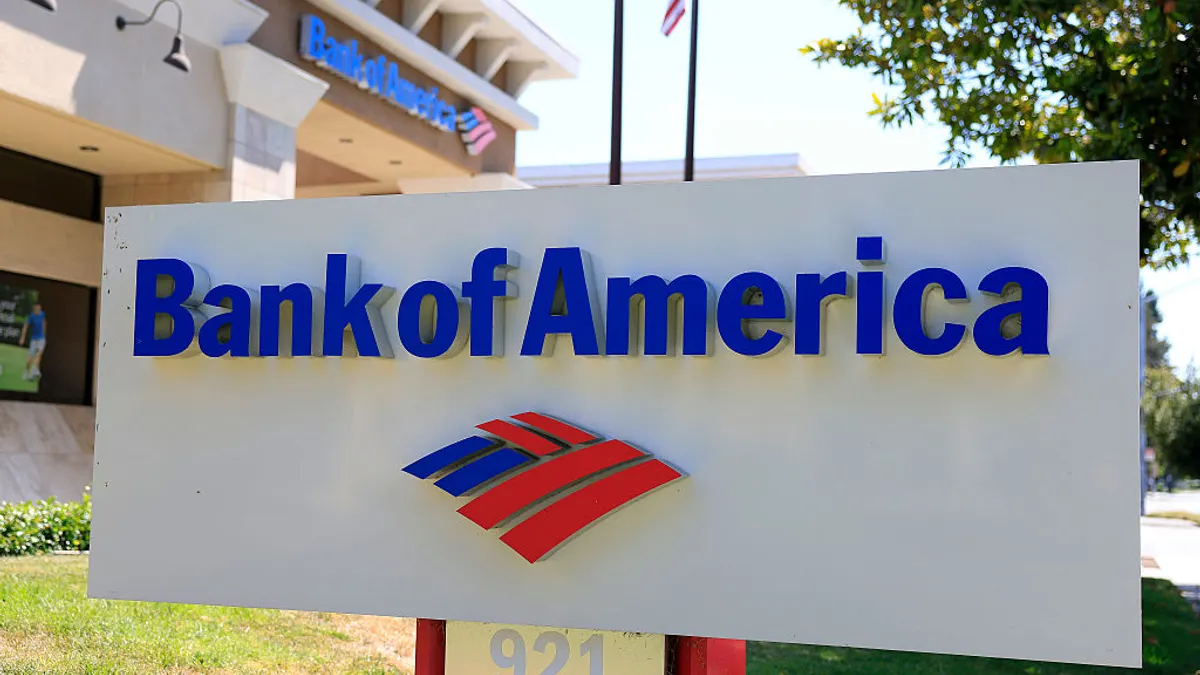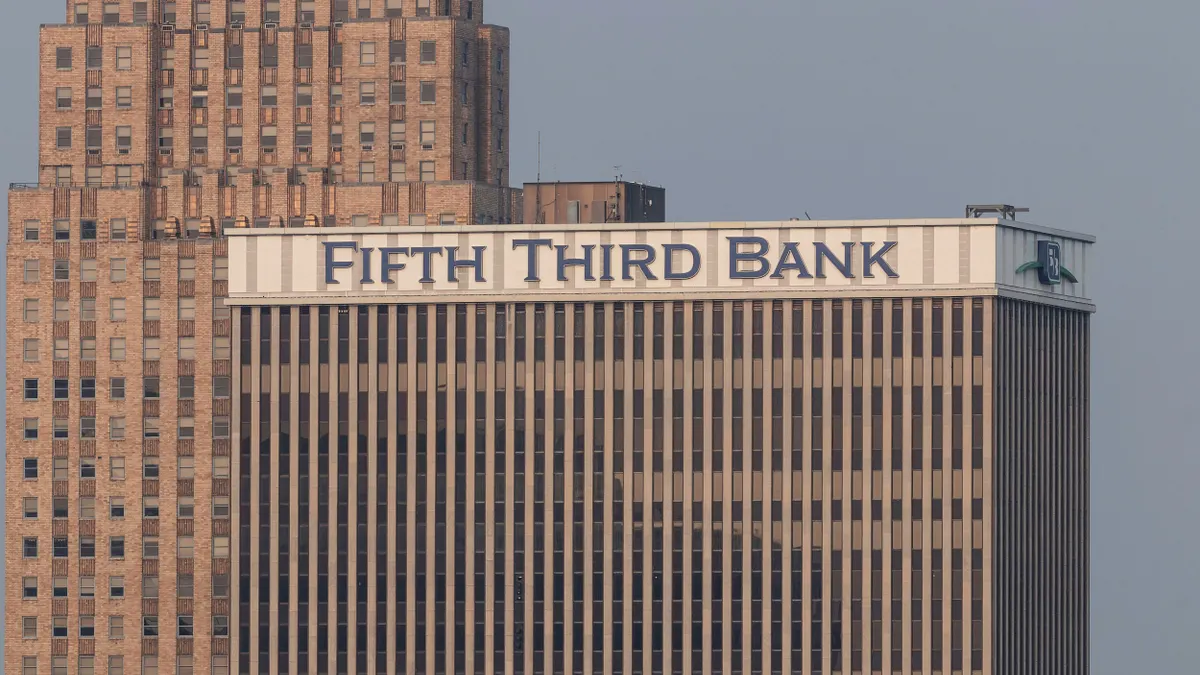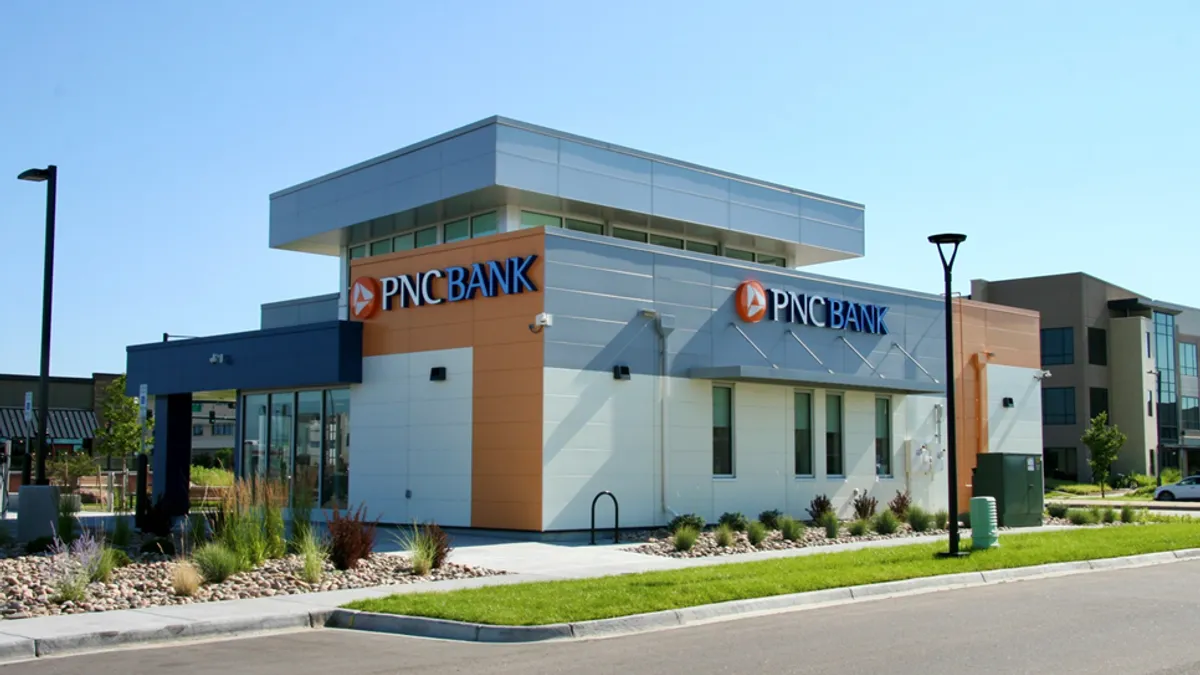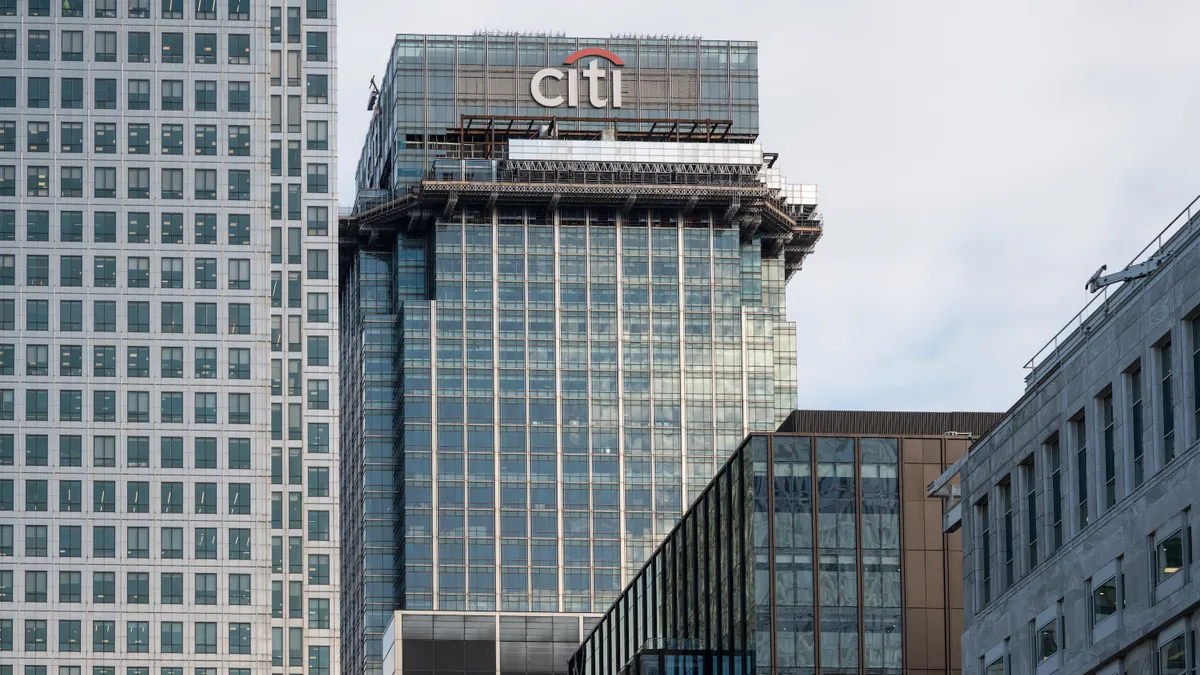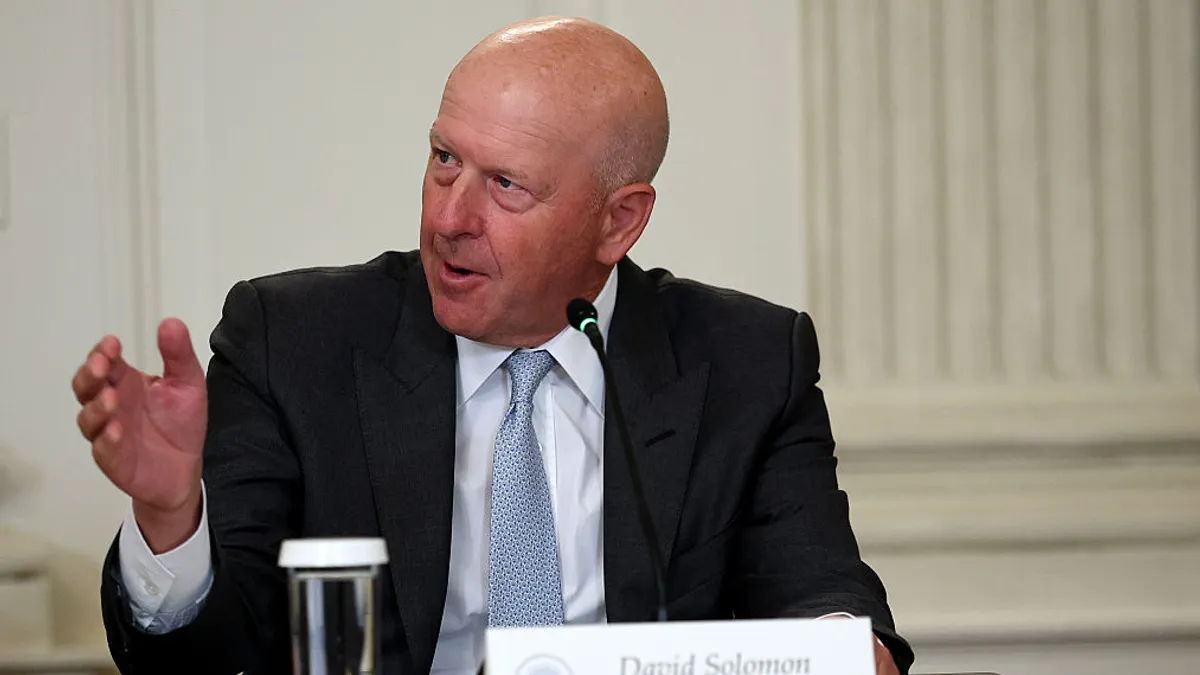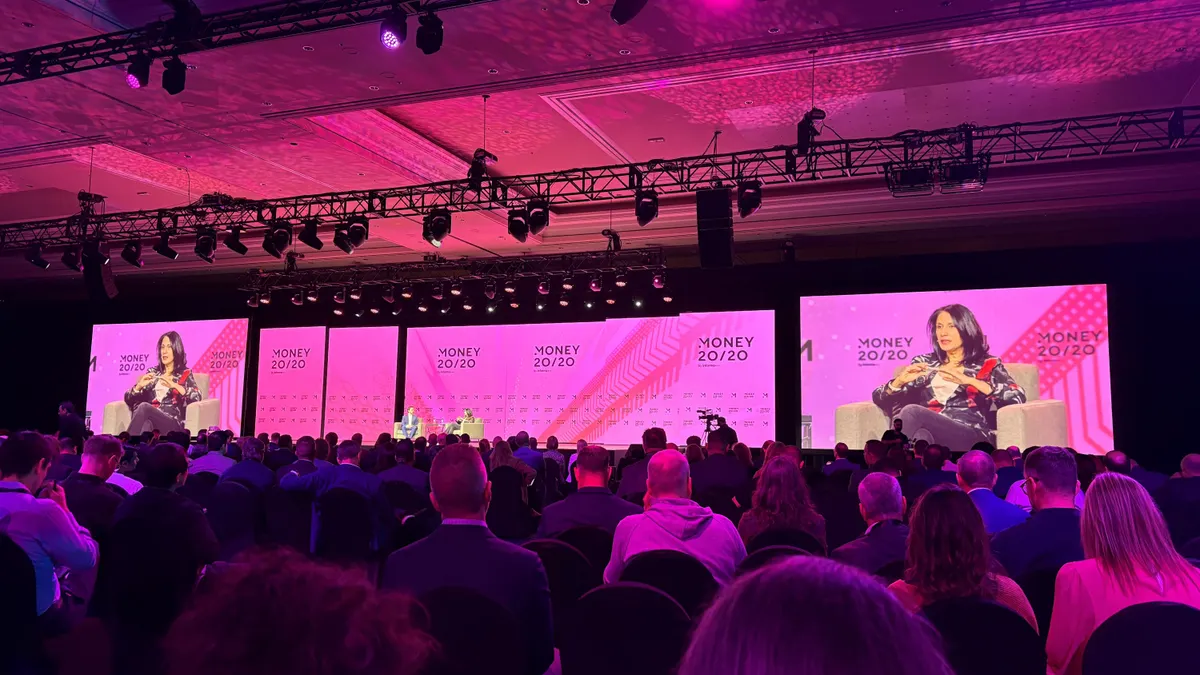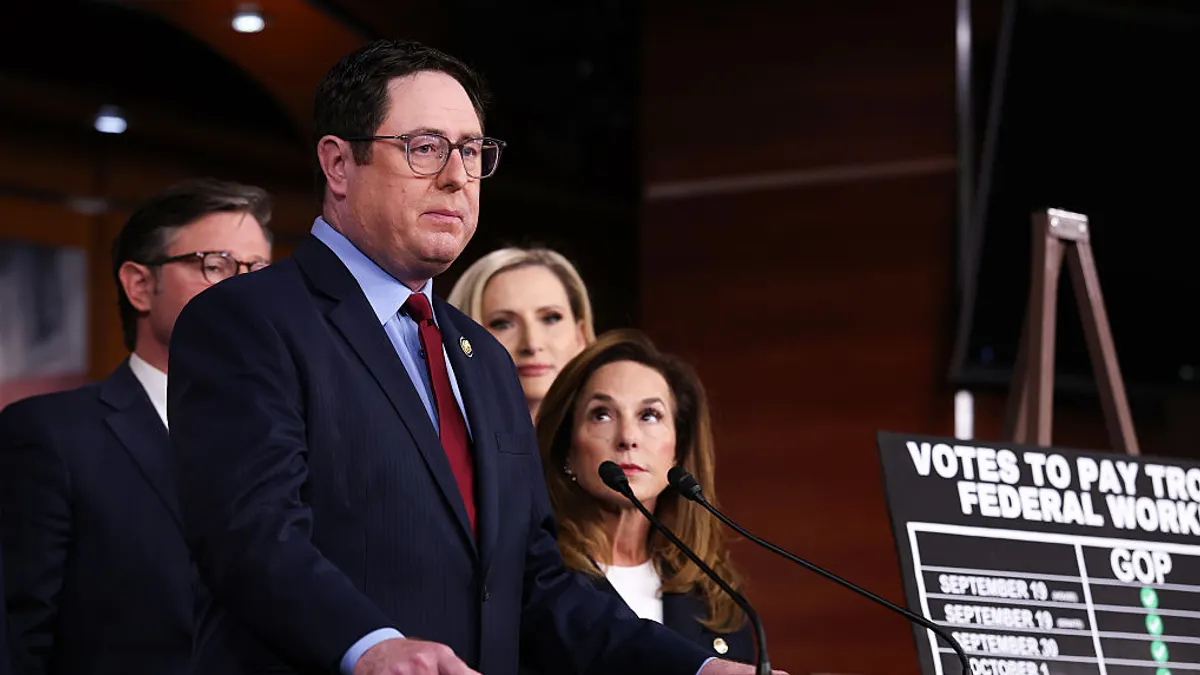Bank of America’s two recently named co-presidents pledged Wednesday to bring “rigor” around meeting the lender’s newly established medium-term goals for enhanced growth and profits.
Dean Athanasia and Jim DeMare – who had been the bank’s regional banking and global markets chiefs, respectively – were named co-presidents in September; the bank also added executive vice president to CFO Alastair Borthwick’s title, lining up three potential successors to 66-year-old CEO Brian Moynihan.
All four executives were on stage at the end of the day Wednesday, answering analyst questions as the investor event in Boston came to a close. It was the Charlotte, North Carolina-based bank’s first investor day since 2011.
Moynihan installed Athanasia and DeMare in their positions and has them working with the management team “to help drive that rigor,” DeMare said.
Athanasia noted he and DeMare are spending more time with the heads of Bank of America’s eight lines of business and taking a detailed and disciplined look at how those units will achieve set goals.
“Jim and I are putting the emphasis on, we want to see results,” Athanasia said.
Those assertions came in response to Wells Fargo analyst Mike Mayo, who expressed skepticism around goals the bank established and said “a sense of urgency” seemed to be missing around executives’ presentations Wednesday.
The bank issued a new medium-term target for return on tangible common equity of 16% to 18%, up from the roughly 15% the company is generating today, along with growth targets for consumer, wealth, global banking and global markets.
“Lot of [key performance indicators] here, to hold you guys accountable and for you guys to hold the line of business heads accountable. So that’s certainly helpful. I’m just not sure that you’re going to achieve a lot of these KPIs,” Mayo said.
Those included accelerating credit card loan growth, from 1% to 5% annually, growing net new assets in wealth, from 2% to 4%-5% annually, and adding 6 million U.S. customers, all in the medium term of three to five years.
“I love big, audacious goals, but there's a disconnect between these audacious goals by line of business segment, and back to the ROTCE, 16-18%, which isn’t so fantastic,” Mayo continued.
Borthwick chalked that up to the business heads being confident based on their view of the bank’s competitive positioning, while the management team takes a more skeptical approach as to whether “every single one of those things” would all “come true on the same day.”
“Are we confident in the aggregate we can deliver that 16% to 18%? Yes, we are,” Borthwick said. Executives also indicated they don’t view that target as a “ceiling.”
Among other efforts, Athanasia pledged that BofA would “get more aggressive in credit card” as the bank seeks further growth in its consumer segment.
However, “it is not clear to us how successful BofA will be in achieving this as it has lost market share in this business for a long time,” JPMorgan Chase analyst Vivek Juneja wrote in a Thursday note.
Executive after executive Wednesday sought to illustrate the competitive moats the company has built in its businesses and markets, both domestically and internationally, and the difficulty a competitor would have in replicating those.
“We walk away questioning the targets for Wealth the most, but also having an even greater appreciation for its unique strength w/$1T of consumer deposits and AI possibilities,” Mayo wrote in a Wednesday note.
Tech spending, succession
Executives at the second-largest U.S. lender were keen to highlight technology investments – $118 billion spent over the past decade – and the returns it’s getting from those thus far.
The bank is investing $13 billion in the coming year in technology, with $4 billion of that dedicated to new capabilities, said Hari Gopalkrishnan, the bank’s chief technology and information officer. BofA has had about 3,800 patents granted over the past seven years.
AI-enabled processes have helped cut the bank’s fraud losses in half since 2018, Holly O’Neill, president of consumer, retail and preferred banking, said Wednesday. And the bank’s 18,000 software developers are using coding agents to optimize the development process, resulting in a 20% productivity gain, Gopalkrishnan said.
The bank also invests about $1 billion in payment technology annually, and its payments platform “is a strategic growth engine” for the bank, fueling $11 billion in recurring revenue, said Mark Monaco, head of global payments solutions at the bank.
Additionally, the bank has spent $1.5 billion in data in the last five years, to collect and organize transactional, customer behavior and demographic data across multiple lines of businesses, Gopalkrishnan said. BofA is now approaching nearly one exabyte of storage.
The bank’s “massive technology investments reinforce our belief that the company is among just a handful of large banks capable of generating the type of differentiated products that will likely drive industry innovation and would be nearly impossible to replicate at institutions lacking such scale,” Piper Sandler analyst Scott Siefers wrote.
The day also offered a look at Moynihan’s potential successors – something rival JPMorgan does annually, but BofA hadn’t in nearly 15 years.
Moynihan, who has led the bank since 2010, has said he plans to remain in his role through the end of the decade. The September announcement elevating the profiles of Athanasia, DeMare and Borthwick seemed to tee up three possible successors for Moynihan.
The event was “an ideal showcase of the depth of [the bank]’s management team,” serving as “many investors’ first opportunity to see all of [BofA]’s most senior managers on stage at the same time,” Siefers wrote.



